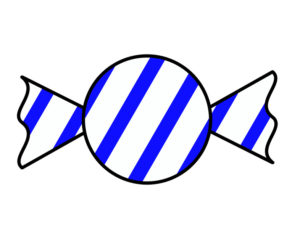Packaging of candy, chocolate or other confectionery is becoming more attractive; They have to inspire consumers to buy, which is better than attracting the eye with packaging that is both glossy and transparent so that you can see gluttony.

How to combine both colored metal foil and transparent fenestration?
The demetallisation process will be used to obtain both a metallized decoration and transparent window areas: the film (often metallic BOPP) will be printed with special inks, this film Metallized and printed material will be demetallized before being generally complexed with another transparent film allowing the sealability.
Complete process for making a confectionery bag :
1. Rotogravure or flexographic printing
2. Demetallisation
3. Lamination
4. Slitting
PHOTOGRAVURE PRINTING
Rotogravure is a rotary printing process, the basic principle of which is to transfer the ink to the support of the metallized film by means of engraved metal cylinders.
Photogravure is recommended for medium and large series.
FLEXOGRAPHIC PRINTING
Flexography is a rotary printing process, the basic principle of which consists in transferring the ink onto the metallized film by means of photopolymeric sleeves or plates on the support.
Flexography is flexible in use, recommended in the case of small and medium series.
The definition of the printing is less fine than the printing carried out in gravure but has a cost much lower than the latter.
DEMETALLISATION
This involves chemically removing unprotected metal areas in a targeted manner and thereby rendering the film transparent at unprinted locations.
The areas printed with the inks of different colors will thus emerge bright and contrast with the transparent areas.
If necessary, the film “demetallised” will be complexed with another support in order to modify certain characteristics such as the barrier or sealability values.
LAMINATION
The lamination makes it possible to assemble two or even several films of various qualities and thus to modify their characteristics as required.
The lamination operation carried out with glue in solvent phase or solvent-free glue makes it possible to render the films thicker and thus increase their mechanical strengths while also providing important functions such as the barrier to aromas, water vapor and to oxygen. In the case of welded bags, the sealability function will also be combined during lamination.
SLITTING
Once the complex is finished, the latter is cut to the width of the user’s needs in order to produce packages of the type of pouches or pouches packaged on automated packaging liners.
The cut is realized in unwinding to the blade and the film delivered in reel of different widths and lengths.
In conclusion, the combination of the complete process described makes it possible to obtain packaging that we can find for the chocolates, papillotes, sweets and other sweets that will make the happiness of the big and small!
Pascal Rousset, R&D Manager

